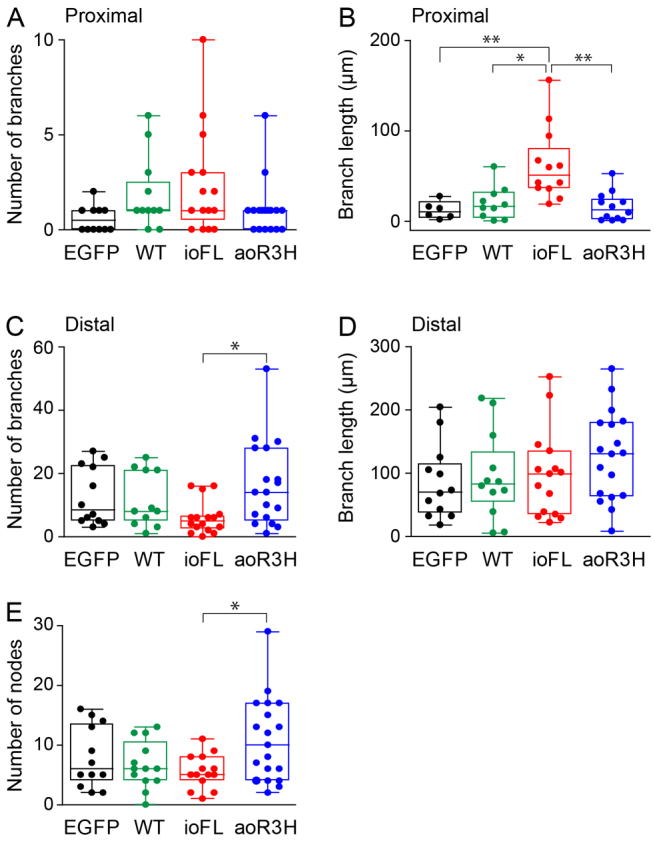Fig. 6.

Infant- and adult-onset mutations have differential effects on proximal and distal branches in CaP neurons. Scatter plots show the numbers (A,C) and total lengths (B,D) of proximal (A,B) and distal (C,D) branches in EGFP-, wild-type Kv3.3-, ioFL- and aoR3H-expressing CaP neurons at ∼48 hpf. The boxes and lines have the same meaning as in Fig. 5F. Values of means ± s.e.m. are provided in Table 1. The color code is the same as in Fig. 5. (A) The number of proximal branches did not differ significantly among the groups (P=0.0849 by ANOVA). (B) The proximal branches in ioFL-expressing CaP neurons were significantly longer than in EGFP-, wild-type Kv3.3- or aoR3H-expressing CaP neurons (P=0.0004 by ANOVA followed by Dunn’s multiple comparison test: EGFP vs ioFL, **P<0.01; wild type vs ioFL, *P<0.05; aoR3H vs ioFL, **P<0.01). (C) The number of distal branches was significantly greater in aoR3H-expressing CaP neurons than in ioFL-expressing CaP neuons (P=0.023 by ANOVA followed by Dunn’s multiple comparison test: aoR3H vs ioFL, *P<0.05). (D) The lengths of distal branches did not differ significantly among the groups. (E) The scatter plot shows the number of nodes in EGFP-, wild-type Kv3.3-, ioFL- and aoR3H-expressing CaP neurons at ∼48 hpf. The number of nodes in aoR3H-expressing CaP neurons was significantly greater than in ioFL-expressing CaP neurons (P<0.05 by ANOVA followed by Newman-Keuls multiple comparison test: aoR3H vs ioFL, *P<0.05). For A–E: EGFP, n=12; wild type, n=13; ioFL, n=16; aoR3H, n=19.
